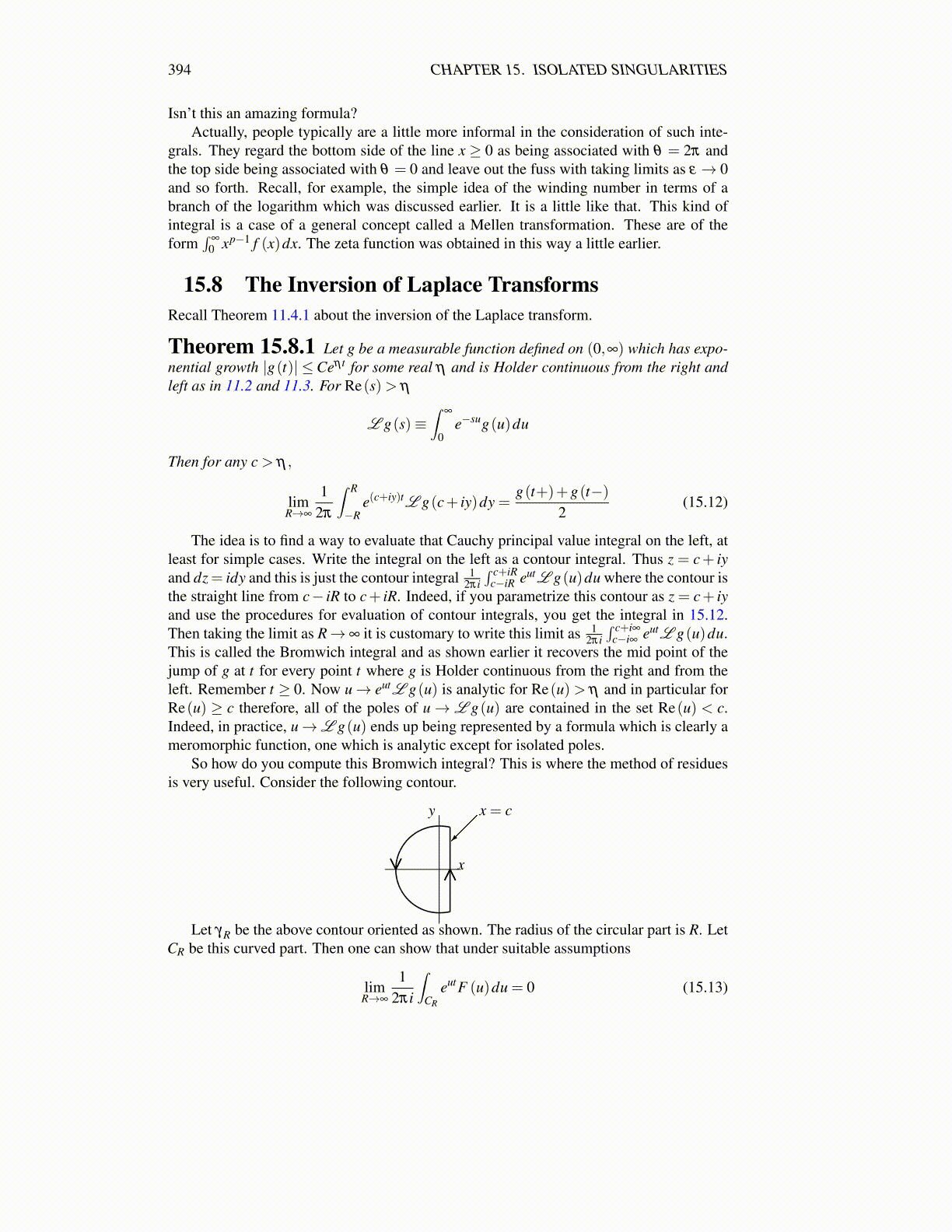
394 CHAPTER 15. ISOLATED SINGULARITIES
Isn’t this an amazing formula?Actually, people typically are a little more informal in the consideration of such inte-
grals. They regard the bottom side of the line x ≥ 0 as being associated with θ = 2π andthe top side being associated with θ = 0 and leave out the fuss with taking limits as ε → 0and so forth. Recall, for example, the simple idea of the winding number in terms of abranch of the logarithm which was discussed earlier. It is a little like that. This kind ofintegral is a case of a general concept called a Mellen transformation. These are of theform
∫∞
0 xp−1 f (x)dx. The zeta function was obtained in this way a little earlier.
15.8 The Inversion of Laplace TransformsRecall Theorem 11.4.1 about the inversion of the Laplace transform.
Theorem 15.8.1 Let g be a measurable function defined on (0,∞) which has expo-nential growth |g(t)| ≤Ceηt for some real η and is Holder continuous from the right andleft as in 11.2 and 11.3. For Re(s)> η
L g(s)≡∫
∞
0e−sug(u)du
Then for any c > η ,
limR→∞
12π
∫ R
−Re(c+iy)tL g(c+ iy)dy =
g(t+)+g(t−)2
(15.12)
The idea is to find a way to evaluate that Cauchy principal value integral on the left, atleast for simple cases. Write the integral on the left as a contour integral. Thus z = c+ iyand dz= idy and this is just the contour integral 1
2πi∫ c+iR
c−iR eutL g(u)du where the contour isthe straight line from c− iR to c+ iR. Indeed, if you parametrize this contour as z = c+ iyand use the procedures for evaluation of contour integrals, you get the integral in 15.12.Then taking the limit as R→∞ it is customary to write this limit as 1
2πi∫ c+i∞
c−i∞ eutL g(u)du.This is called the Bromwich integral and as shown earlier it recovers the mid point of thejump of g at t for every point t where g is Holder continuous from the right and from theleft. Remember t ≥ 0. Now u→ eutL g(u) is analytic for Re(u)> η and in particular forRe(u) ≥ c therefore, all of the poles of u→ L g(u) are contained in the set Re(u) < c.Indeed, in practice, u→L g(u) ends up being represented by a formula which is clearly ameromorphic function, one which is analytic except for isolated poles.
So how do you compute this Bromwich integral? This is where the method of residuesis very useful. Consider the following contour.
x
x = cy
Let γR be the above contour oriented as shown. The radius of the circular part is R. LetCR be this curved part. Then one can show that under suitable assumptions
limR→∞
12πi
∫CR
eutF (u)du = 0 (15.13)